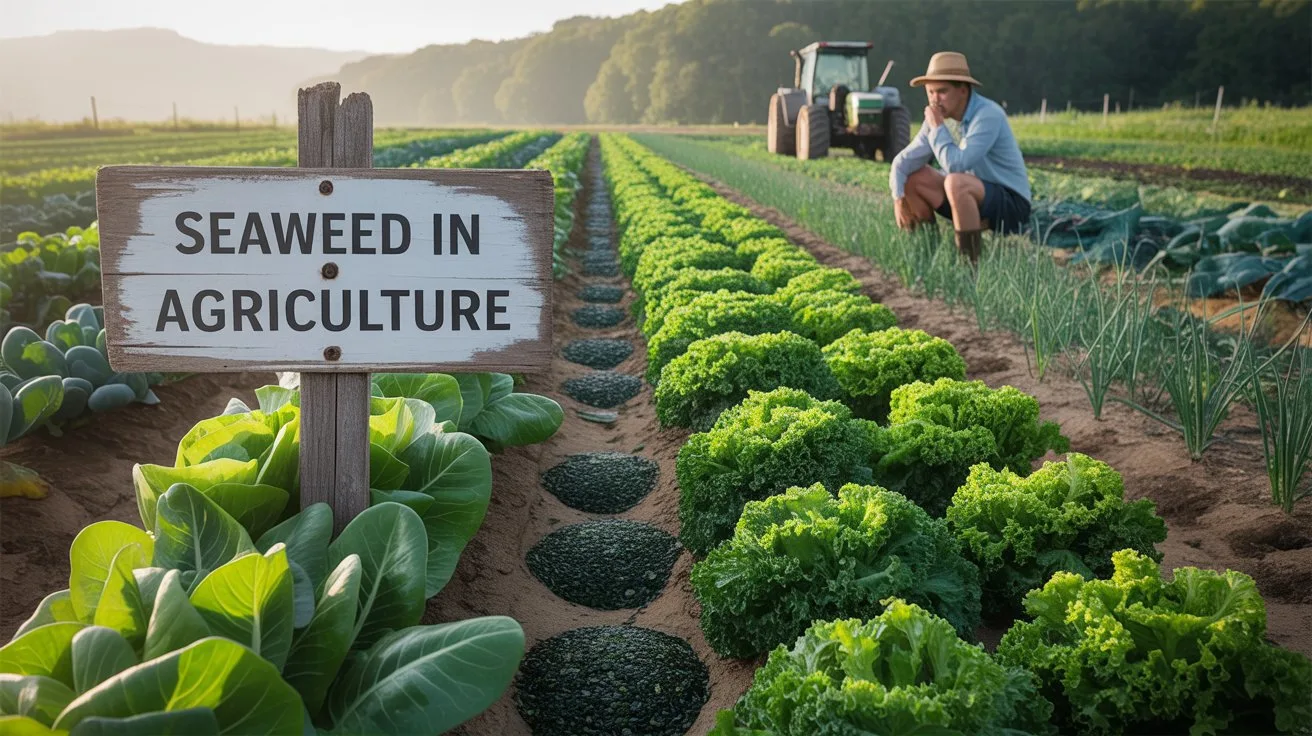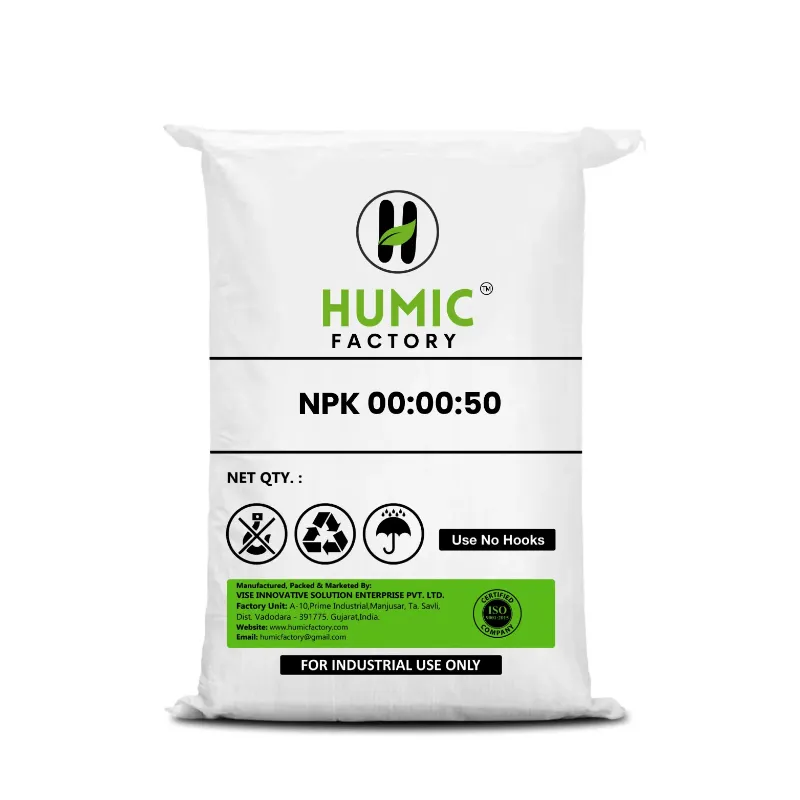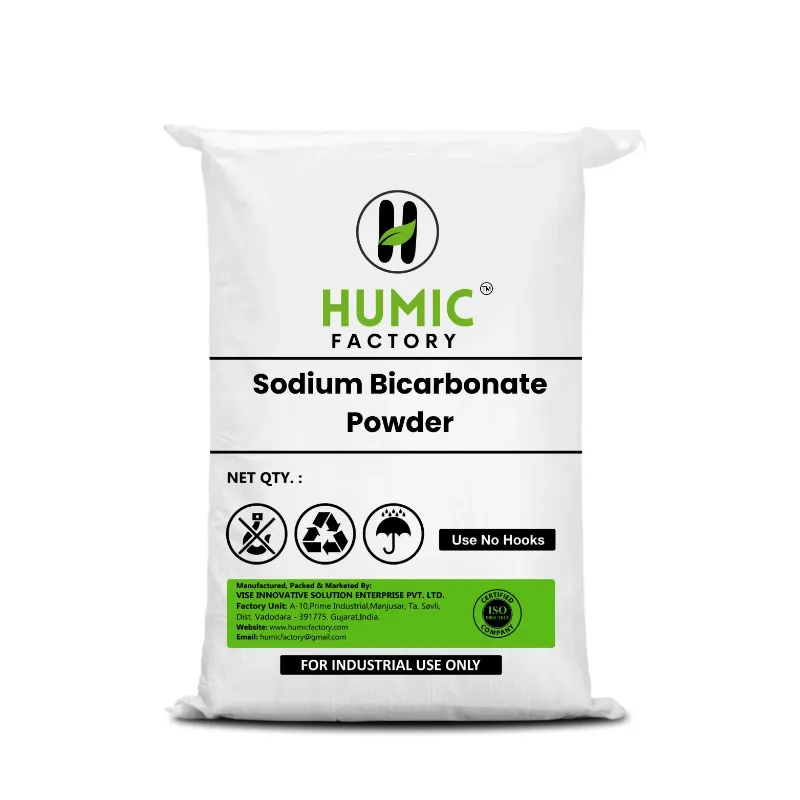Seaweed is a marine plant which has substantial nutritional benefits and has helped change agriculture. High in bioactive compounds, natural growth hormones and essential minerals, seaweed for agriculture are becoming an increasingly valued resource for sustainable agriculture.
Seaweed has provided similar health benefits provides a full range of nutrition for plants, increase plant immunity to increase soil health to crop production.
The history of seaweed for agriculture goes back thousands of years.
Coastal communities in Japan, China and Korea were the first farmers to farm seaweed not only for food purposes, but also for traditional medicine and soil amendments. As time went on the farmers recognized that by including seaweed in the field, they could achieve greater crop productivity, better soil fertility and increase host plant protection from pests and disease influences.
Seaweed has had historic applications in agriculture which has also experienced historical transitions to modern agricultural practices to take advantage of seaweeds for eco-friendly sustainable farming practices, where seaweed has a promising role as a natural alternative.
Seaweed Applications in Agriculture
Seaweed is a superfood for plants. Seaweed Applications in Agriculture range in variety, including:
- Liquid seaweed extracts for foliar applications.
- Dried and powdered seaweed for incorporation into soil.
- Compost activators to improve soil microbes.
Seaweed sources provide some of the necessary nutrients, such as potassium, calcium, magnesium, and trace minerals, but as many are also sources of natural plant hormones, such as cytokinins, auxins, and gibberellins, when applied to crops or the soil, they have the potential to stimulate growth, aid nutrient uptake and eventually help crops improve their survival rates when stressed by climatic or environmental influences.
Advantages of Seaweed in Agriculture
- The advantages of seaweed in agriculture are high and wide-reaching, making it an excellent option for sustainable agricultural methods
- Encouraging root growth. Seaweed enhances root development, which means that plants can access water and nutrients more efficiently.
- Building plant resistance to insects, diseases, and extreme weather events. Natural constituents in seaweed build plant resistance to various genetically and environmentally pathogenic stressors, such as insect pests (herbivory), plant diseases, as well as stress due to excessive weather variations.
- Higher yields and quality. Farmers consistently report improvements in croplands, improvements such as higher yield, better fruit size, and flavor and shelf-life improvements
- Improvement of soil health. Seaweeds also enhance soil, feed soil microbes, and improve soil structure.
- Good for the environment and sustainable. Seaweed is renewable, biodegradable, and reduces the need for chemical fertilizers.
Farmers can improve the welfare of their crops while improving environmental welfare as well using seaweeds ensures healthy growth with no adverse side effects.
Introduction – Why Seaweed in Agriculture Is Gaining Global Attention
Essentially, In agriculture seaweed is smartly gaining worldwide traction as a natural and sustainable solution for crop production. Farmers globally are now recognizing seaweed, a staple in coastal communities for centuries, as an environmentally sustainable way to improve soil quality, enhance crop production, and, possibly, decrease reliance on synthetic chemicals.
The increasing interest in seaweed's use in agriculture relates to its abundant sources of soil nutrients, plant growth hormones, and bioactive molecules that build natural resistance in plants. Additionally, to combat soil depletion and climate change, more farmers are choosing to go back to using this ancient resource from the ocean to support their crop growing practices and manage sustainability.
From Ocean to Farm: A Shift Toward Sustainable Solutions
Seaweed farming has actually existed for thousands of years, particularly in countries like Japan, China and Korea. Originally for human consumption, medicine, and soil enrichment, seaweed has now established itself as a component of modern agriculture as a sustainable input. Today, with improved technology, seaweed farming is being expanded with regards to not only food for human consumption but also agricultural purposes.
This evolution from wild ocean harvesting to agriculture application demonstrates that seaweed is a unique resource as a mediator between nature and the agriculture of today. Because of the renewable nature of seaweed, farmers can utilize its properties without exhausting natural resources. For this reason, seaweed in agriculture is a useful mechanism to help address food production and environmental sustainability issues.
Seaweed as an Eco-Friendly Input for Modern Farming
The agronomic advantages of seaweeds hold value to the health of both the soil and the edible plants grown which arguably make it the most useful natural input today. Some highlights of the advantages of seaweeds are:
- Providing natural minerals, vitamins and trace elements to the plant.
- Providing the natural growth hormones / phytohormones - auxins, cytokinins, and gibberellins that develop the plant.
- Rebuilding soil structure and water retention.
- Reinforcing plant immunity so they can resist pests, diseases, and environmental stress.
- Reducing reliance on chemical fertilizers and pesticides, which supports cleaner and healthier ecosystems.
The use of seaweeds in agriculture is a nice, slow, strong way to give life to plants and at the same time preserve it for next generations.
The History of Seaweed Farming and Agricultural Use
The historical view of seaweed farming was so significant to past societies' lived experience of their coastal environments, that their understanding that seaweed was worthy of attention predated modern scientific interest in its potential value as a cultural resource. Throughout time seaweed's role in our bodies and our agricultural systems transitioned from a base food and nutrient source, to now being thought of an effective tool to encourage agricultural growth.
Ancient Coastal Cultures and Seaweed Harvesting
Long before the modern era of fertilizers, communities near the coast, discovered the value of seaweed as something natural plant booster. Many places along coastlines delivered them an abundance of seaweed washed ashore to be collected as it washed up by hand.
- In the Celtic areas of inland and coastal Ireland and Scotland, farmers were taking seaweed and directly spread it back on to their land as a soil fertility enhancer.
- Native Americans of the eastern seaboard of North America involved seaweed in their corn planting process.
- In Japan, seaweed harvesting dates back thousands of years where it was harvested and used as a food and to add back into rice fields.
This early use of seaweed as a resource for our agricultural crops helped birth sustainable farming practices such as using marine nutrients recycled through our land with the understanding the land would always need nutrients for continual plant growth.
Traditional Seaweed Use in Asia and Europe
The seaweed farming history shows it was established in Asia, very much in Japan, Korea, and China.
- In Japan the seaweed production started over 300 years ago, and is still a major component of both food and agriculture.
- The use of seaweed in Korea and China has long been associated with food security and as a natural soil amendment.
- They did not make a distinction between seaweeds and understand their roles differently compared to their soil-based plant counterparts.
- In Europe, especially in coastal regions like France and parts of the British Isles, seaweed was utilized as a method of enriching the thin, nutrient-poor soils.
These earlier usages emphasized the added values of seaweed in agriculture systems—improving soil structure, adding nutrients, and allowing for the proper development of plant health— long before synthetic fertilizers were ever available.
Evolution from Food to Fertilizer: A Historical Perspective
As agricultural practices evolved and our demands for food increased, the use of seaweed moved from food to fertilizer use.
- By the 20th century, scientists began investigating the natural growth hormones found in seaweed, vitamins, and trace minerals that also exist in seaweed.
- Seaweed extracts were developed so farmers could use these concentrated solutions and apply them directly to crops.
- Seaweed is now used in agriculture globally as both a foliar spray and soil conditioner. The goal is to increase the health of the plants, increase the yield of crops while decreasing reliance on chemical fertilizers.
This shift illustrates how ancient knowledge exists with modern technologies to create a sustainable solution for farming issues today.
Seaweed Use in Agriculture Today
The agricultural use of seaweed has similarly emerged into a key aspect of sustainable farming practices today. Globally, farmers are starting to use seaweed-based products to enhance their crop quality, reduce dependency on chemical inputs (e.g. synthetic fertilizers) and promote a healthy soil. Due to ample industry development and research, its sustainable use is now available to a variety of scales, soil types, climates and crops.
How Seaweed Is Processed for Agricultural Products
There has been a basic development of seaweed use for agriculture for nearly 400 years that included hand-harvesting seaweeds in a raw, unprocessed form. Processing techniques have evolved, and on-site processing options are far more advanced, and commercial use of seaweeds in agriculture has changed and expanded greatly. Most seaweeds will go through a couple of processed steps and transitioned into a more-useful agricultural product before it gets to the farm.
- Harvesting: Seaweeds may be harvested from wild coastal locations or cultivated from seaweed farms (which continues the tradition of seaweed farming).
- Cleaning and Drying: Seaweeds are cleaned to remove excess salt, sand and contaminants (and also dried to prevent spoilage).
- Extraction: Mechanically or chemically, they can be processed to separate (extract) growth regulating compounds, vitamins and minerals.
- Formulation: The extracted materials can be processed down into either a liquid concentrate, powder or pellets that can be used on all types of farming.
Liquid Extracts, Powders, and Compost Additions
Seaweeds are available in multiple forms or products with distinct advantages for distinct farm types, crops, or application methods.
- Seaweed Liquid Extracts: These products are the most widely used in contemporary seaweed agriculture. They can be foliar applied to the leaves of plants or watered on using irrigation systems, resulting in relatively rapid absorption of nutrients.
- Seaweed Powders: Dried seaweed products can be ground and mixed into the soil before planting. This process adds significant organic matter and solubilized nutrient additions to the soil.
- Compost Additions: Seaweed can also be incorporated into compost piles during the decomposition process. This addition can speed up the decomposition process, enhance the organic quality of the compost, and contribute trace minerals of value to the compost.
These products allow farmers to easily gain access to the unique attributes that seaweeds can provide in agriculture and then modify those attributes for use in their own production growing system.
Seaweed Applications Across Crop Types and Farm Sizes
Seaweed can help target a wide array of crops, whether they propagate from a small back yard garden or from a large commercial farm.
- Vegetable Farms: Seaweed assists in seed germination and encourage rapid growth and efficient use of nutrients.
- Fruit Orchards and vineyards: Seaweed extracts promote flowering, fruit set, fruit size, colour, and sweetness.
- Cereal crops: Seaweed helps crops promote root strength and helps mitigate the effects of environmental stresses such as drought and temperature changes.
- Greenhouses and Nurseries: Seaweed extracts help develop healthy roots and promote rapid growth in potted plants and seedlings.
- Organic Farms: One of the few products that works with natural inputs in general, seaweed fits well into a certified organic system, as certified organic systems are not based on chemical fertilizers.
The number of applications to using seaweed is why its use in agriculture will continue to grow as farmers seek safer, more sustainable methods of feeding their crops.
The Science Behind Seaweed: How It Supports Plants and Soil
Seaweed supplies plants with a full-spectrum source of natural ingredients to make them grow bigger and more vigor. With farmers using more seaweed products in agriculture, science is beginning to uncover how the complexity of seaweed provides a diversity of positive effects for soil and plants. This natural source helps with plant growth, improves soil health, and promotes sustainable agriculture.
Nutrient-Rich Composition of Seaweed-Based Fertilizers
The advantages of seaweed used in agriculture start with its very diverse nutritional value. Whereas synthetic fertilizers offer a few macronutrients, seaweed provides a much wider array:
- Macronutrients: Seaweed supplies the macronutrients nitrogen, phosphorus, potassium, calcium, magnesium, and sulfur that are necessary for the growth of plants.
- Micronutrients: Seaweed provides the micronutrients including iron, manganese, zinc, copper, boron and molybdenum, which are all essential for support enzyme functions and plant health.
- Natural Plant Hormones: Seaweed contains cytokinins, auxins, and gibberellins which help regulate plant development and growth.
- Amino Acids and Vitamins: These compounds will also enhance plant metabolism, root development, and stress tolerance.
This natural blend that is offered with seaweed using it in agriculture is a short cut all-in-one to fertilizing, augmenting plant health, and fostering a healthy soil ecosystem.
Microbial Activity, Soil Structure, and Moisture Retention
In addition to feeding plants, seaweed in agriculture helps build soil health. Soil health is the basis for sustainable agriculture, and seaweed enhances soil physical, chemical, and biological properties.
- Microbial Activity: Seaweed contains organic materials that feed soil microbes. These soil microbes will decompose nutrients and make them more plant available, but can also help nutrients suppress deleterious pathogens.
- Soil Structure: Seaweed aids soil structure; so aggregated soils improve aeration and root penetration which leads to healthy root systems that can absorb greater amount of nutrients and moisture.
- Moisture Retention: The organic compounds in seaweed can increase moisture-holding characteristics in soil, reducing the need for irrigation or increasing plant survival during drought.
The cumulative relationships of these benefits can help support existing soil fertility, that is why farmers value seaweed and use it as resources in their efforts to protect their land for future generations.
Biostimulants That Trigger Natural Growth Responses
One of the notable benefits of seaweed in agriculture is its natural biostimulant properties. seaweed doesn't just feed plants, it triggers natural mechanisms that makes them stronger and more productive.
- Stress Tolerance: seaweed extracts help plants to tolerate abiotic stresses like drought, heat/cold stress, and salinity.
- Improved Germination: seeds treated with seaweed extracts typically germinate faster and more uniform.
- Improved Nutrient Uptake: seaweeds stimulate root growth which allows plants to take up nutrients more readily when present in the soil.
- Improved Resistance: Plants treated with seaweed, produce plants with greater resistance to pests, fungal and bacterial infections.
These biostimulant effects are part of the growing trend in seaweed's use in agriculture, allowing farmers a natural method to boost plant vigor, health and yield, without relying on chemicals.
Key Benefits of Seaweed in Agriculture
seaweed in agriculture provides many benefits to plants as well as farmers. As knowledge of the history of seaweed farming and the present usage of seaweed continue to expand, more and more farmers are using this abundant natural renewable resource to produce a sustainable crop. The seaweed benefits in agriculture go beyond raw nutrition factors, affecting factors like yield, soil health, and environmental sustainability.
Boosting Crop Yield and Improving Plant Immunity
Of course, there are compelling and noticeable benefits of seaweed in agriculture, most relevant today, is the fact that seaweed helps create stronger, healthier plants that produce more food, in greater quantities. Seaweed has many natural plant hormones and bioactive components that help stimulate the development of plants through all stages of growth, from seed germination to harvest.
- Faster Germination: Seaweed treatments assist seeds to sprout faster and successfully, resulting in crops that have a better start.
- Stronger Growth: Seaweed encourages root development and enhances the photosynthesis process, which results in strong growth.
- Increases Yields: The increase in the amount of nutrients plants are able to uptake and the health of the plants, farmers typically experience considerable amounts of harvested crop production increase.
- Improved Immunity: Seaweed activates the plants natural defence mechanisms, assisting plants in defending against pests and diseases and also environmental stressors such as drought, heat, or salinity.
These effects make seaweed use in agriculture an effective tool for farmers seeking more resilient crops without heavy chemical intervention.
Reducing Reliance on Chemical Fertilizers and Pesticides
The farming industry is seeking much safer and more environmentally friendly alternatives, and seaweed gives a clear pathway. The use of traditional chemical fertilizers and pesticides leads to soil degradation, contamination of waterways, and in the longer term, loss of soil fertility. On the other hand, seaweed in agriculture provides a natural solution that will promote a more healthy plant while also reducing synthetic and chemical inputs.
- Less Use of Chemical Fertilizer: Seaweed has all the essential macro and micronutrients that plants flourish on naturally, reducing reliance on outside fertilization.
- Less Reliance on Pesticides: Seaweed's natural macromolecules encourage surface development to address adverse environmental conditions in basically two ways. The net factor is that, it helps the plant resist disease and pests, thus eliminating the need for chemical pesticides.
- Safe for the Environment: Seaweed is reasonable---it is biodegradable, which does not hang around in the environment, causing contamination of groundwater nor time contamination of and toxic build-up in soils.
This transitioning away from reliance on seaweed instead of synthetic and chemical inputs will certainly keep farmers in production at present yields and adopt more sustainable, environmentally friendly practices.
Enhancing Soil Health and Long-Term Sustainability
The use of seaweed promotes the health of the soil in a way that uniquely supports long-term sustainability for farms.
- Better Soil Structure: Seaweed improves soil aggregation, which improves aeration, drainage, and root penetration.
- Increased microbial activity: Seaweed is a food source for favorable microorganisms, promoting comprehensiveness in terms of soil biodiversity.
- Increased Water Retention: Soils that have been previously treated with seaweed retain moisture better which reduces wasted water and provides water for plants in dry times.
- Long-Term Soil Fertility: With consistent use the organic matter content of soil will increase, and therefore also soil fertility, without draining nutrient storage capacity.
This may be one of the biggest solutions for the on-going sustainability of agriculture and ultimately farmland for generations to come.
Environmental and Economic Advantages
Seaweed in agriculture provides environmental and economic benefits that allow it to be both an environmentally responsible and practical solution for modern farmers. As farmers search for solutions to balance productivity and responsible stewardship of the environment, the benefits of seaweed in agriculture are remarkably compelling as a powerful option that benefits both short-term production and long-term sustainability.
Seaweed’s Role in Climate-Smart Farming
With climate change and adverse climatic events creating unpredictable seasons, farmers need methods to assist crops withstand challenges that threaten yield. Seaweed use in agriculture will provide a natural way to improve adaption to a stress in climate-smart farming.
- Carbon Sequestration: Seaweed's photosynthetic response to environmental cues is to uptake significant quantities of carbon dioxide during growth, assisting with the mitigation of carbon in the atmosphere.
- Reduced Chemical Dependency: With less dependence on synthetic fertilizers and pesticides, farmers using seaweed in agricultural practices contribute to lower carbon emissions involved in the production and utilization of chemicals in agriculture.
- Resilience to Extreme Weather: Seaweed-based extracts improve the ability of plants to be tolerant to drought, heat, and salinity stressors associated with growing conditions. More tolerant plants allow farmers to maintain yield, even under harsh growing conditions.
Through these contributions, seaweed in agriculture plays a growing role in creating more climate-resilient farming systems that protect both crops and the environment.
Lower Input Costs and Long-Term Profitability for Farmers
While many sustainable practices involve an increased start-up costs; however, the benefits of seaweed in agriculture provide both low-cost and long-term cost savings opportunities for farmers.
- Lowered Fertilizer Costs: Due to the many nutrients found in seaweed, many times farmers can use less synthetic fertilizers, therefore lowering input costs!
- Fewer Pest/Disease Losses: Seaweed enhances plant immunity, less crop loss and decreased costs on chemical pesticides!
- Enhanced Crop Quality: When plants are healthier, fruits, vegetables, and grains held in larger quantities create lower quality and can be sold at a higher price.
- Increased Long-term Yields: Healthier soils and healthier plants creates consistent high quality yields, year after year, using seaweed in these systems.
More profits not only superstructure to bottom line savings; lower inputs and consistent or increased outputs leads to greater profitability over time, thus making the use of seaweed not only environmentally responsible, if using seaweed for agriculture is financially viable, then why not use it?
Seaweed Farming as a Renewable, Low-Impact Industry
The history of seaweed farming shows that seaweed farming has long been a sustainable, low-impact industry with many positive environmental outcomes compared to land-based agriculture or land-intensive aquaculture.
- No Fresh Water or Fertilizers– Seaweeds grow naturally in ocean water and do not require any irrigation or chemical inputs.
- Little Land Use- Seaweed farming is done off the coast of land farms, which frees up finite land farming for other food crops.
- Promotes Marine Biodiversity- Seaweed farms create new habitat for fish and marine creatures, thus enhancing ecosystems along our coasts.
- Renewable and Fast-Growing- Seaweeds grow fast and can be harvested multiple times per year, which add up to a guaranteed sustainable resource.
Seaweed production is expected to grow, the benefits of seaweed as it relates to agriculture resource management, will extend beyond the farm, to an entire industry that is renewing their practices, and relying on environmentally responsible and sustainable products.
Real-Life Success Stories: Seaweed Farming in Action
Farmers across the world are recounting their own success stories employing seaweed in farming. The long history of seaweed farming and use may go back hundreds of years but the modern examples across the world say that ancient practice is now presenting modern solutions to improve yields, enhance soils, and advocate for regenerative farming.
Global Case Studies Using Seaweed in Agriculture
From cross-continent perspectives, farmers have adapted the application of seaweeds to agriculture. This has proven beneficial in improving yields and even soil health.
- Australia: Certain crops such as carrots and potatoes are grown on large scale vegetable farms in Tasmania. Farmers use liquid seaweed extracts to promote root development. They report stronger plants, better uniformity, and longer shelf life of crops.
- India: Most tea estates located in Assam and Darjeeling have used seaweed based foliar sprays to improve their yields and resistance to some fungal pathogens, thus reducing their reliance on chemical fungicides.
- United States: California has seen a tremendous growth in their vineyards. Seaweeds have been incorporated into their fertilization programs to increase the quality of the grapes. Wineries also get better color, sugar and disease resistance which improves the quality of the wine.
- Europe: Powedered seaweed has aided organic farms in the UK as an amendment to soil. It has enhanced the retention of water and microbial activity, most especially in sandy soils that suffer from high permeability and frequent drainage.
The above, and other similar examples emphasize the advantages that seaweeds offer to agriculture through their diverse applications across different regions, with varying crops and farming systems.
Stories from Coastal Farmers and Regenerative Growers
The farming of seaweed is historical to the coastal areas as a form of sustenance for people for centuries. At present, both coastal farmers and regenerative agriculture proponents are at the forefront of using seaweed to enhance the sustainability of the farms.
- Irish Coastal Farmers: The coastal farmers from Ireland, who used to handpick and use seasweed in their fields, still practice this tradition. The application of seaweed helps restore the health of nutrient depleted soils and helps sustain grasslands for livestock for grazing.
- North American Regenerative Farmers: Some regenerative farmers in the US are incorporating seaweed into compost and biofertilizers. They shift the focus from chemicals to bio-engi-neered soil building. These farmers report improvement in soil health, reduction of soil erosion, and enhanced drought resistance.
- Coastal Japan: Japan is known to have a rich tradition of seaweed farming. The use of seaweed in rice field management is still prevalent today, increasing soil fertility without land resources depletion.
These examples of practices modern agriculture has adopted with the aid of technology or the knowledge of older generations vastly illustrates the potential investment of seaweed in agriculture.
Results in Yield, Soil Health, and Pest Reduction
The usage of seaweed in farms significantly impacts the yield, soil health, and natural pest control relative to other gardening techniques. The benefits overlook the primary focus of modern farming which is the output.
- Yield Improvements: Research indicates that farms utilizing seaweed-containing fertilizers report improved yields in the range of 10% - 25% depending on the crop and its growing conditions.
- Healthier Soils: The application of seaweed greatly improves the soil's physical properties, microbial activity, and organic matter.
- Pest and Disease Reduction: Plants grown with seaweed are better able to regulate their own internal balance, resulting in less attack from biological pests and less use of industrial pesticides.
These results corroborate these claims that the advantages of seaweed in agriculture far exceed multiple harvests, fostering healthier ecosystems and more sustainable farming systems year after year.
Frequently Asked Questions (FAQs)
Q1. What is seaweed in agriculture used for?
Seaweed in agriculture is used as a natural fertilizer, soil conditioner, and biostimulant to improve plant growth, boost yields, and enhance soil health.
Q2. What are the main benefits of seaweed in agriculture?
The benefits of seaweed in agriculture include stronger plant immunity, better root development, increased yields, improved soil structure, reduced chemical fertilizer use, and greater drought resistance.
Q3. How did seaweed farming begin?
The history of seaweed farming dates back thousands of years in coastal regions such as Japan, China, and Europe, where communities harvested seaweed to enrich their soils and feed their crops.
Q4. How is seaweed applied to crops today?
Seaweed use in agriculture includes liquid extracts sprayed on leaves, powdered seaweed mixed into soil, and compost blends that enrich soil biology and improve moisture retention.
Q5. Is seaweed in agriculture safe for organic farming?
Yes, seaweed in agriculture is widely approved for organic farming due to its natural composition, sustainability, and environmentally friendly benefits.
Conclusion – Embrace the Power of Seaweed in Agriculture for a Greener Future
Seaweed in agriculture offers today’s farmers a perfect balance of ancient wisdom and modern science. The history of seaweed farming shows us that coastal communities recognized seaweed’s value for soil health and crop productivity long before synthetic fertilizers existed. Today, science confirms that these age-old practices still hold the key to sustainable farming.
Seaweed Is the Bridge Between Traditional Wisdom and Modern Sustainability
The growing popularity of seaweed use in agriculture demonstrates how traditional knowledge can serve as the foundation for innovative, eco-friendly solutions in modern farming. What began as hand-harvesting seaweed from coastal shores has now evolved into a global industry that supports:
- Organic farming systems
- Regenerative agriculture practices
- Climate-smart farming solutions
The benefits of seaweed in agriculture extend beyond single harvests. They improve soil health, enhance biodiversity, and support long-term farm sustainability while reducing reliance on chemical inputs that harm the environment.
Grow Smarter, Greener, and More Resilient—Naturally
For farmers and growers seeking to future-proof their operations, seaweed in agriculture provides a safe, reliable, and highly effective path forward:
- Healthier Crops: Seaweed helps plants resist pests, diseases, and environmental stress.
- Healthier Soil: Seaweed improves soil structure, feeds beneficial microbes, and supports moisture retention.
- Healthier Planet: Seaweed farming itself is renewable, low-impact, and helps reduce carbon emissions.
As the history of seaweed farming continues to evolve, its role in sustainable agriculture grows even more essential. With each application, farmers contribute not only to better harvests but also to a greener, more resilient future for generations to come.





